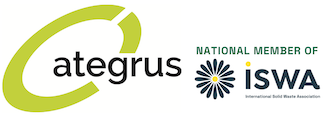Fuente: EEA, https://www.eea.europa.eu
Publicación 21/05/2024
«Starting next year, EU Member States must put separate collection systems in place for textiles. The European Environment Agency’s briefing, published today, shows that most textile waste in Europe currently ends up in mixed waste and that sorting and recycling capacity need to be urgently scaled up to ensure better and more circular use of used textiles.»
«The EEA briefing ‘Management of used and waste textiles in Europe’s circular economy’ shows the current state of textile waste generation, collection systems, treatment capacity and the different classifications for used textiles in Europe.
According to the EEA estimate, around 16 kg of textile waste per person was generated in the EU in 2020. Only about one quarter of this amount (4.4 kg) was collected separately for reuse and recycling, but the rest ended up in mixed household waste. Of all textile waste, 82% came from consumers and the rest was waste from manufacturing or textiles that were never sold.
The EU Waste Framework Directive (WFD) mandates Member States to have separate collection systems for used textiles from next year. The European Commission has also proposed a targeted revision of the WFD to introduce mandatory Extender Producer Responsibility for textiles in all Member States to make producers responsible for the full life cycle of textile products, from their design to waste management. The Commission proposal is also introducing separate collection rules for textiles and sorting requirements for used textiles shipment.
(…)»
El artículo se puede leer completo en este enlace: https://www.eea.europa.eu/en/newsroom/news/most-textile-waste-goes-unsorted
En cuanto al informe que se menciona se puede consultar aquí
«Management of used and waste textiles in Europe’s circular economy
The Waste Framework Directive (WFD) mandates that from 2025, EU Member States must establish separate collection systems for used textiles. This briefing provides an overview of the current state of textile waste generation, collection systems, treatment capacity and the different classifications for used textiles in Europe. Additionally, it identifies factors which must be considered when implementing separate collection systems to foster the circularity of textiles without inadvertently increasing exports, incineration, or landfilling.
Key messages
- The EU generated an estimated 6.95 million tonnes of textile waste in 2020 — around 16kg per person. Of this, 4.4kg per person were collected separately for reuse and recycling, and 11.6kg per person ended up in mixed household waste.
- Of the total textile waste, 82% was post-consumer waste. The rest was textile waste generated from manufacturing or unsold textiles.
- In more than half of the EU-27 Member States, it is already mandatory to collect textiles separately, but this is mostly to capture reusable textiles.
- If sorting and recycling capacities are not scaled up in Europe, there is a risk that significant amounts of collected textile waste will continue to end up in incinerators or landfills or be exported to regions outside the EU.
- Harmonisation of definitions and mandatory reporting on the amounts and management of used and waste textiles are needed for setting future targets and monitoring the sector’s progress towards circularity.
Todos los detalles sobre la European Environment Agency en su web oficial: https://www.eea.europa.eu

